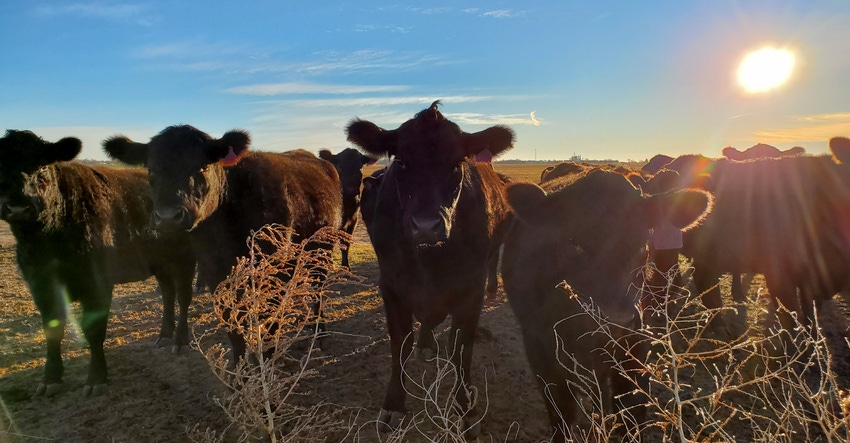
A first-ever field training for North American private-sector veterinarians and state and federal animal health officials for foot-and-mouth disease will be held in Uganada, Feb. 9-14, 2020. The training, offered by Texas A&M AgriLife and Texas A&M College of Veterinary Medicine and Biomedical Sciences, includes hands-on experience in the diagnosis and investigation of a real outbreak in a foot-and-mouth disease-endemic country.
Foot-and-mouth disease is a severe, extremely contagious viral disease of cloven-hoofed animals such as cattle, swine, sheep, goats and deer. Training will cover foot-and-mouth disease pathogenesis, clinical diagnosis, laboratory testing, epidemiology, outbreak investigation and biosecurity.
The training will also equip participants to train others "back home." The event is a collaboration of AgriLife with the European Commission for the Control of Foot and Mouth Disease, EuFMD. Registration closes Jan. 2.
Solutions
While the U.S., Canada and Mexico have not experienced an occurrence of foot-and-mouth disease since 1929, 1952 and 1954, globally, the disease is endemic in many countries in Asia, the Middle East and large parts of Africa. It also continues to be seen in some parts of Europe along with sporadic outbreaks in South America.
“The U.S. livestock industries and animal health officials have been working on U.S. foot-and-mouth disease preparedness plans for many years,” said Elizabeth Parker, DVM, AgriLife Research. “The need for this training is at an all-time high for U.S. veterinarians working with livestock. The recent rapid spread of African swine fever across Asia reminds us of the need to be vigilant and increase our preparedness for foreign animal diseases such as African swine fever and foot-and-mouth disease.
"If the U.S. had an outbreak of foot-and-mouth disease, early detection is key, and our private sector veterinarians will most likely be the boots on the ground to help regulatory animal health officials implement the daily response.”
Biggest threat
“The return of foot-and-mouth disease to the U.S. is one of the biggest threats to our industry,” said Colin Woodall, chief executive officer for the National Cattlemen’s Beef Association. “It is important that courses like this are used to help educate, train and prepare large animal vets and industry experts to help us respond quickly and decisively. Preparation and prevention are key, and this course will help with both.”
The course will train participants on how to:
safely examine livestock without spreading the disease between farms
age lesions and take foot-and-mouth disease diagnostic samples
understand what the U.S. regulations will require
help clients develop a biosecurity plan specific for their operations to minimize the odds of an outbreak on their farm or ranch
“Private veterinarians play a vital role in protecting the U.S. dairy herd from foot-and-mouth disease,” said Jamie Jonker, vice president for sustainability and scientific affairs for the National Milk Producers Federation. “Hands-on training opportunities to observe foot-and-mouth disease are an excellent opportunity for dairy veterinarians to hone their skills in protecting the U.S. dairy herd from the disease.”
Economic risk
Foot-and-mouth disease is not a food safety or public health threat, but it does pose a serious economic risk to the U.S. agricultural and food industry due to large-scale production losses and severe restrictions on international trade. Control and eradication costs could also be significant. According to USDA, research suggests an outbreak in the U.S. could result in losses of $15 billion to $100 billion, depending on the duration of the outbreak, the extent of trade restrictions and consumer reactions.
“We are proud to offer this course, the first of its kind for North America, to give our veterinarians the resources and training to properly and safely manage a potentially catastrophic disease among our nation’s livestock,” said Eleanor M. Green, DVM and the Carl B. King Dean of Veterinary Medicine at Texas A&M.
The European Commission for the Control of Foot-and-Mouth Disease has offered this training for over 10 years for other countries, but this is the first opportunity designed for North America. A field veterinarian from U.S. Department of Agriculture-Animal and Plant Health Inspection Service will also take part during each training to discuss the specifics of a U.S. response.
“This course is a great opportunity for private practitioners, where they will get a Foreign Animal Disease Diagnostician-like experience and see foot-and-mouth disease in person,” said Dr. Burke Healy, US Chief veterinarian and Veterinary Services deputy administrator for USDA’s Animal and Plant Health Inspection Service. “While we’ve been able to send a few veterinarians to a European course in the past, having a course hosted by a U.S. institution will mean that many more U.S. veterinarians will be able to participate. Private practitioners play an important role in helping us detect foreign animal diseases like foot-and-mouth disease or African swine fever, should they ever occur in the United States, giving us a better chance to catch a disease before it is widespread.”
More information and registration for the course can be found at https://vetmed.tamu.edu/ce/continuing-education-eu-fmd-training/.
More information on foot-and-mouth disease can be found at https://www.foot-and-mouth diseaseinfo.org/.
Source: is AgriLife TODAY, which is solely responsible for the information provided and is wholly owned by the source. Informa Business Media and all its subsidiaries are not responsible for any of the content contained in this information asset.
About the Author(s)
You May Also Like




